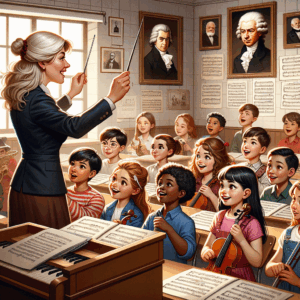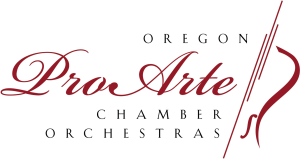Working on pieces, practicing, and collaborating with a teacher require focus, attention to detail, and the ability to follow several steps. Students carefully listen to each detail of tempo, dynamics, and tone quality, observing how minor changes can completely refashion a passage.
Reading music and understanding rhythm links music to math and language. As kids translate symbols into sound, they exercise memory, sequencing, and pattern recognition. Listening attentively helps students with reading comprehension and writing, as they notice how sentences are built and ideas connected. This cross-skill development makes the classroom more cohesive and helps students see the value of careful study.
Regular rehearsals and public performances teach discipline and teamwork. Commitment to practice, respect for peers, and the courage to perform in front of others are not limited to music. These experiences form habits that help students meet school goals and prepare for life after graduation.
Cognitive Benefits and Neurological Impact
Scientists have found that musical training can change how the brain processes sound and information. Practicing an instrument or singing regularly improves auditory memory, attention, and the speed of processing. That means learners can absorb new instructions faster and keep track of multiple ideas during a lesson.
Students who have better listening and memory abilities have a tendency to capture details faster in reading assignments and see patterns more readily in math problems. The more far-reaching advantage is a stronger learning toolbox across subjects, with cognitive enhancements that underwrite flexible thinking and problem solving.
Even mature learners can develop sharper listening and improved concentration through ongoing engagement in a program. Continued practice, positive feedback from instructors, and cooperation with peers help maintain progress.
Emotional and Social Development
Students can convey moods, ideas, and stories through their instrument or voice, often with fewer words. This expressive work helps grow emotional literacy, a key skill for clear communication and managing stress in daily life.
 Playing in an ensemble teaches cooperation. All members must listen, adjust, and support the whole group. Peer feedback becomes a regular part of growth, and leadership roles emerge as students lead sections or lead warm-ups and rehearsals. These experiences mirror real classroom teamwork and project groups.
Playing in an ensemble teaches cooperation. All members must listen, adjust, and support the whole group. Peer feedback becomes a regular part of growth, and leadership roles emerge as students lead sections or lead warm-ups and rehearsals. These experiences mirror real classroom teamwork and project groups.
Public performances teach the value of effort, accept mistakes as part of the process, and celebrate success with an audience. Over time, kids notice they can handle pressure more calmly, both on stage and in the classroom, which boosts self-esteem and social ease.
Academic and Behavioral Benefits
During lessons, students involved in music study generally concentrate better. In study habits, they are more consistent. The repeated overall routine of practicing the instrument tends to promote time-management skills and the ability to break tasks into smaller steps. These skills can be applied to homework, projects, and test preparation, helping students learn more effectively.
When groups rehearse together, learners build trust, reduce friction, and develop a shared sense of purpose. Disruptive behavior can be reduced and listening can improve within the classroom due to positive social connections, making the learning environment more respectful for all.
Schools that have robust music programs see an increase in regular attendance and a sense of belonging. Students participating in music are proud to practice and perform, which further motivates them. This sense of purpose may see students through seasonal slumps and grade-to-grade transitions, thus maintaining progress.
Cultural Awareness and Global Perspective
Listening students hear the different notes of baroque and romantic music, for example, and along with those notes hear how culture, history, and creativity have shaped what we hear. Hearing pieces by composers who come from various backgrounds broadens the palate and challenges the stereotypes about what “good music” sounds like.
Listening to works from different areas provokes curiosity about the stories behind the music. Students make associations between the rhythms, melodies, and harmonies and events from history or daily life. Such background makes seeing more meaningful and helps learners become more thoughtful and open-minded listeners.
In school ensembles, learners from different homes work side by side. They share duties, give and receive feedback, and celebrate the richness of various cultural viewpoints. The result is a classroom climate that values difference and builds mutual respect, which spills into all subjects and social settings.
Practical Implementation in Schools
A dedicated music block at a set time, a weekly chamber group, or cross-curricular projects using musical elements can fit into many schedules. Teachers can link listening activities with reading or history to keep the focus broad yet relevant.
To run a program that lasts, schools need trained staff, instruments, and space. Partnerships with local orchestras or university music departments can supply mentors and guest clinicians. Start with a pilot in one grade or one class, then expand as you build results and support from families and leaders.
Use rubrics that rate technique, rhythm, listening, and collaboration. Students see growth through regular feedback, while concerts give motivating milestones. A clear plan tells families and principals what to expect and how to measure success – thereby increasing buy-in.
Equity, Access, and Community Involvement
Some students may not have access to an instrument or private lessons. Schools might bridge the gap through lending programs, instrument banks, and affordable materials. Free after-school practice sessions and community partnerships ensure inclusivity.
Mentoring and performance opportunities can be provided by community groups, local theaters, or youth orchestras. Support for music programs within families tends to increase when family members see an association between practicing in the classroom and public events. Rehearsals and logistics might be aided by local volunteers with special skills, who would share their time and talents to enrich program sustainability.
Online lessons, practice apps that don’t require high-end gear, and score sheets allow students to practice at home and in after-school care. Sharing devices, Wi‑Fi access, and practice time makes care for accessibility so that more learners can remain involved and advance.
